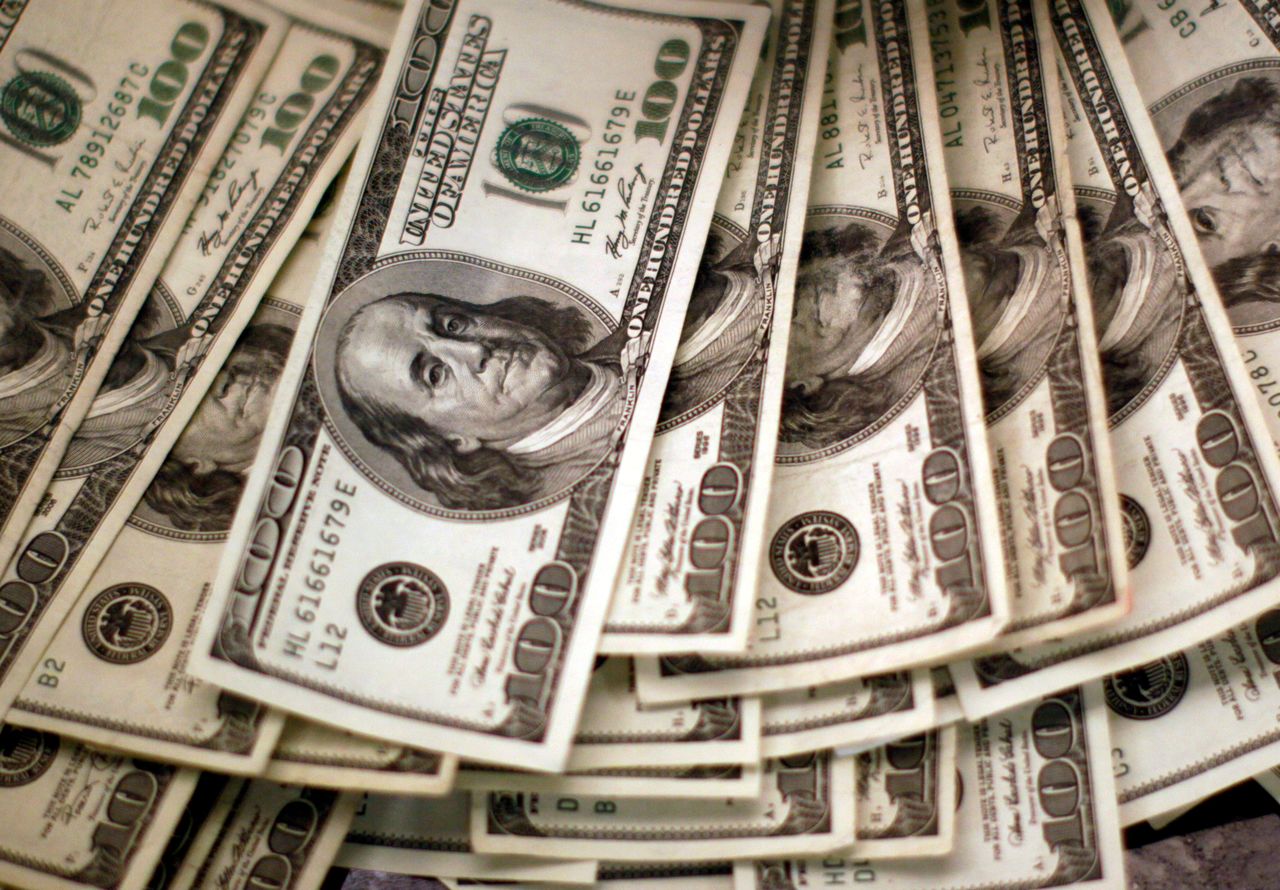Dollar index slips in mix of gains, losses on major currencies
Newsfrom Japan
- English
- 日本語
- 简体字
- 繁體字
- Français
- Español
- العربية
- Русский

FILE PHOTO: Four thousand U.S. dollars are counted out by a banker counting currency at a bank in Westminster, Colorado November 3, 2009. REUTERS/Rick Wilking
By David Henry
NEW YORK (Reuters) - The dollar index traded in a narrow range on Thursday as the greenback held steady against the euro, lost ground to the British pound and Canadian dollar and gained on the Japanese yen.
The diverging performances in the currencies came with changes in economic outlooks for their home countries and evolving views on when, and by how much, different central banks will pull back on easy money policies to control inflation in their recoveries from the COVID-19 pandemic.
In late afternoon in New York, the dollar had gained 0.6% on the yen, and lost 0.5% to the Canadian dollar. Sterling picked up 0.5% to $1.42 and the euro was up less than 0.1% at $1.22.
The dollar index was down 0.1% for the day, holding on to most of a 0.4% gain on Wednesday.
The moves came as new U.S. economic data on Thursday showed a greater-than-expected decline in new unemployment claims and an acceleration in business spending on equipment.
Also supporting the dollar, U.S. Treasury yields rose on concerns about the coming supply of government debt after the New York Times reported that President Joe Biden will announce on Friday a $6 trillion budget for 2022.
The yield on the 10-year note was up to 1.605 in from 1.574 on Wednesday.
The yen, trading at 109.785 to the dollar, has lost 1% in two days since the Japanese government slashed its economic outlook for the first time in three months.
The British pound rose suddenly when a Bank of England policymaker said the central bank is likely to raise interest rates well into next year but that an increase could come earlier.
"The market is reacting to a hawkish headline and that's why we saw sterling gallop," said Erik Bregar, head of FX strategy at Exchange Bank of Canada.
Sterling's strength helped to lift the Canadian dollar against the greenback, Bregar added. Higher oil prices helped the loonie, too.
The Bank of Canada has been quicker than other central banks to pull back support for economic growth.
China's yuan appreciated to as much as 6.368 per dollar in offshore markets, a three-year high. Investors have been raising their bets on further strength, confident that the People's Bank of China is not displaying discomfort with the rally.
Market attention now turns to U.S. inflation data due on Friday. A jump in prices could be seen as prompting the Fed to scale back its easy money policies.
Economists expect the data to show that core PCE (personal consumption expenditures) prices jumped 2.9% year-on-year in April, compared with a year-on-year rise of 1.8% a month earlier.
Cryptocurrency bitcoin was down 1% at $38,808, and ether had lost nearly 5%.
(Reporting by David Henry in New York and Tommy Wilkes in London; Editing by Peter Graff, Jane Merriman and Richard Chang)
(c) Copyright Thomson Reuters 2021. Click For Restrictions -
https://agency.reuters.com/en/copyright.html
Reuters Japan United States Asia Australia Europe Canada US New Zealand United Kingdom UK